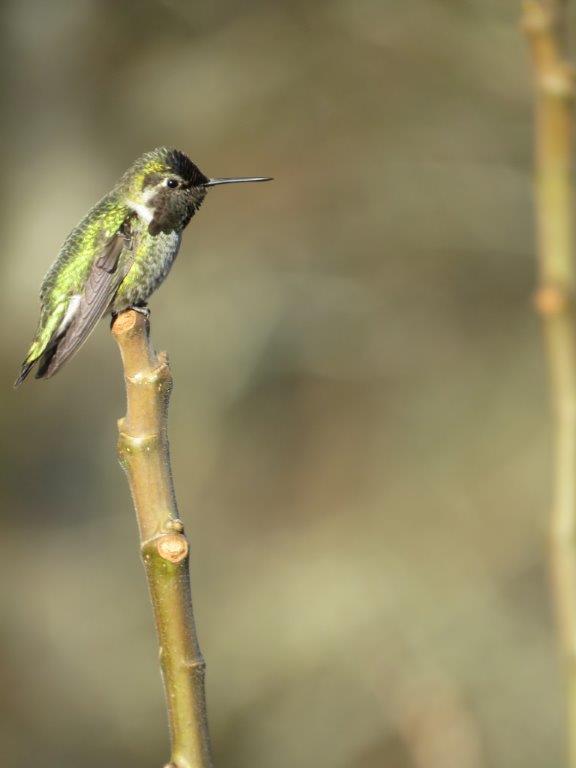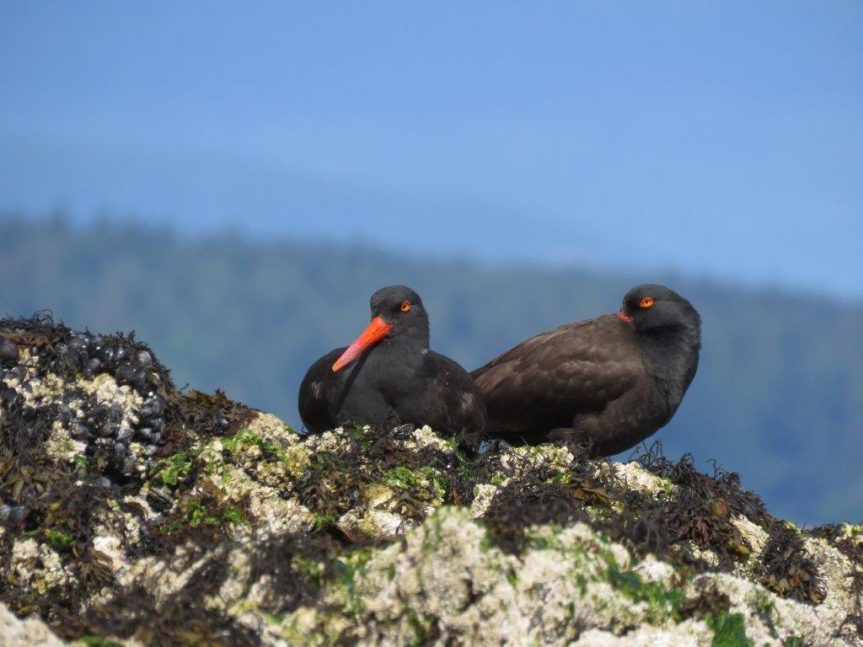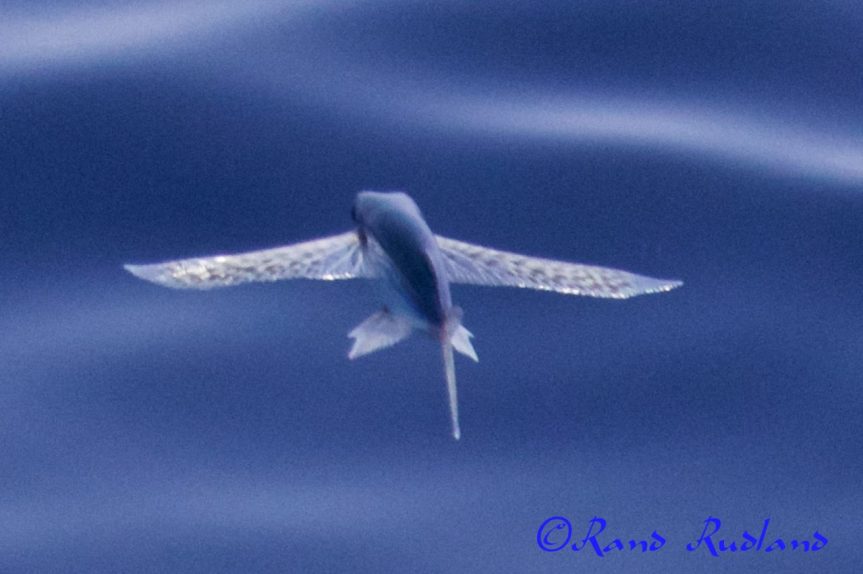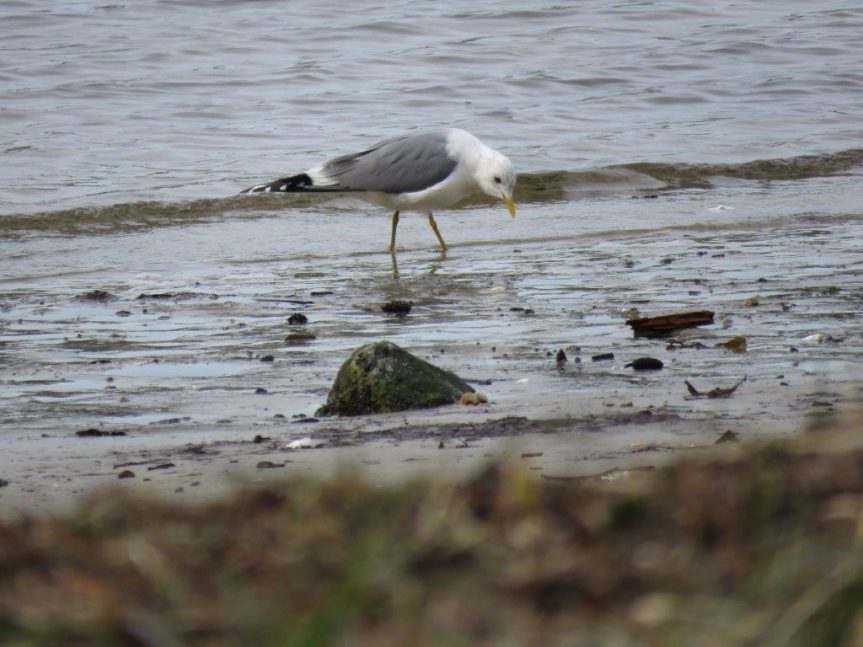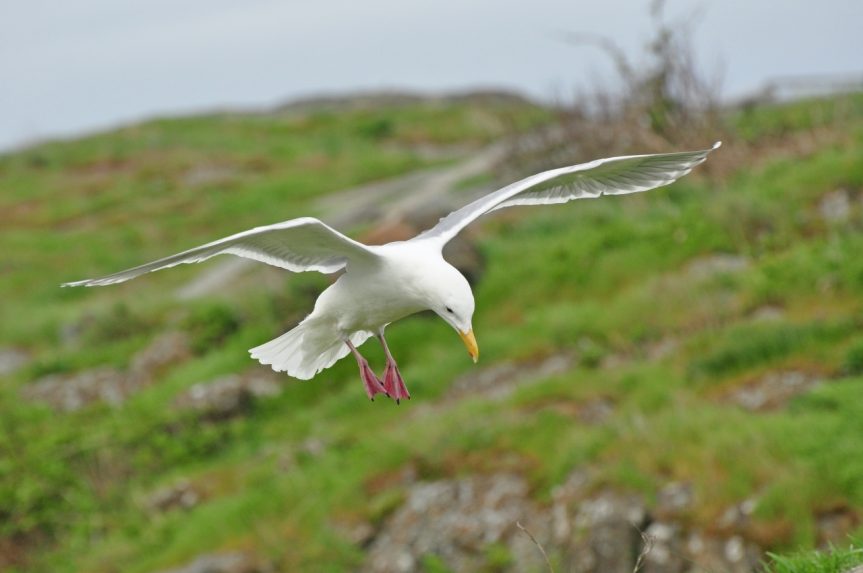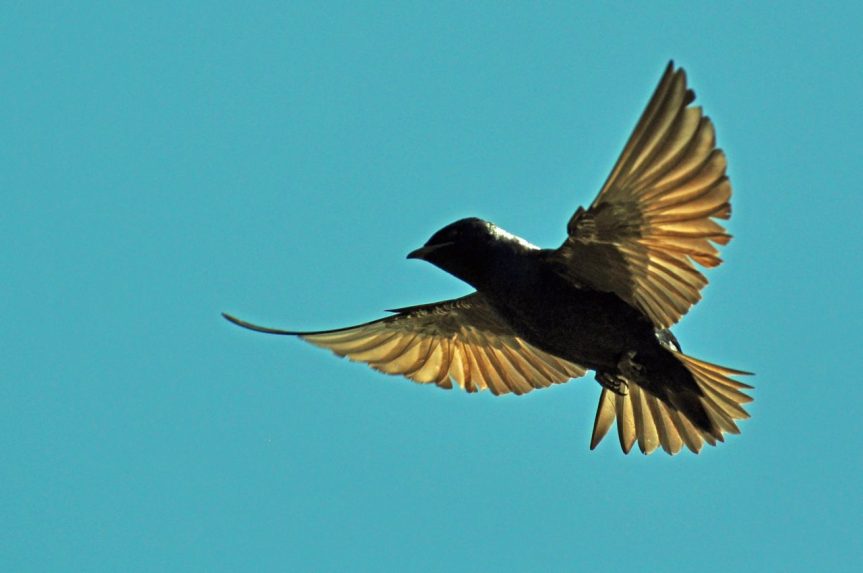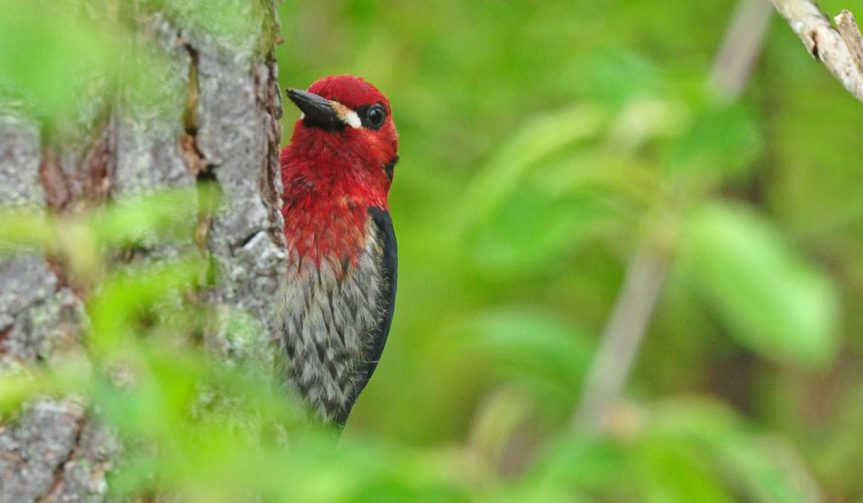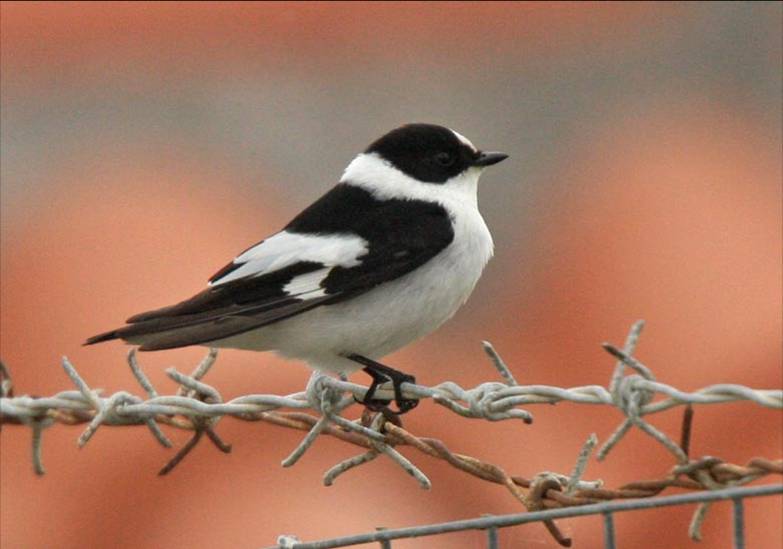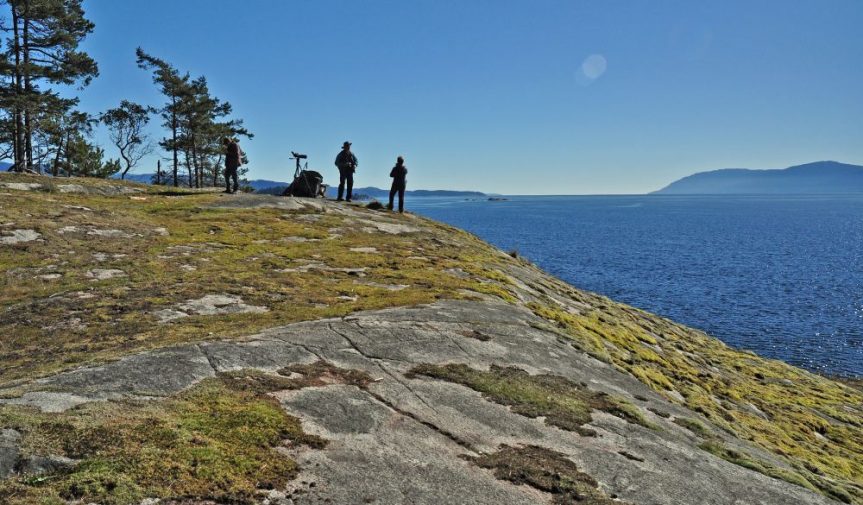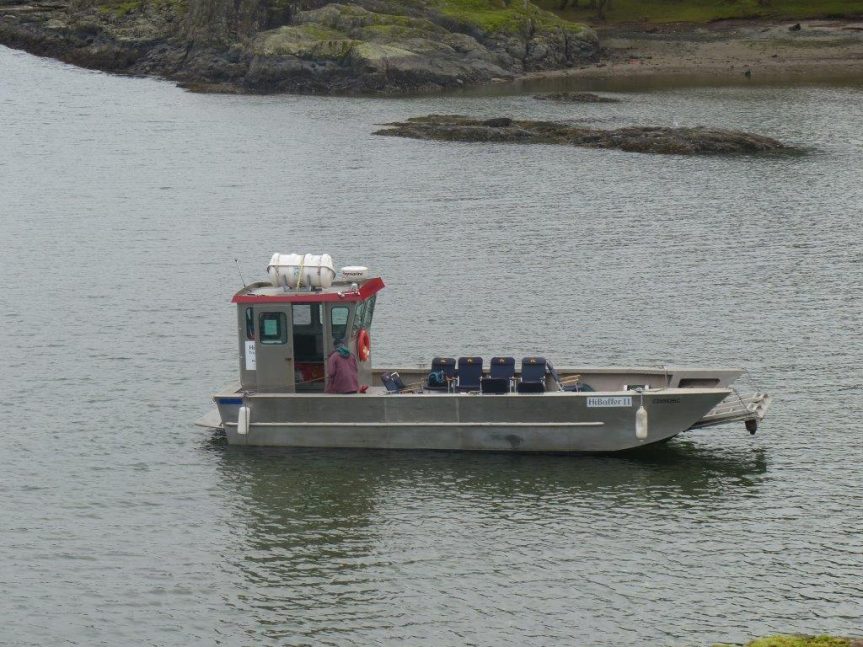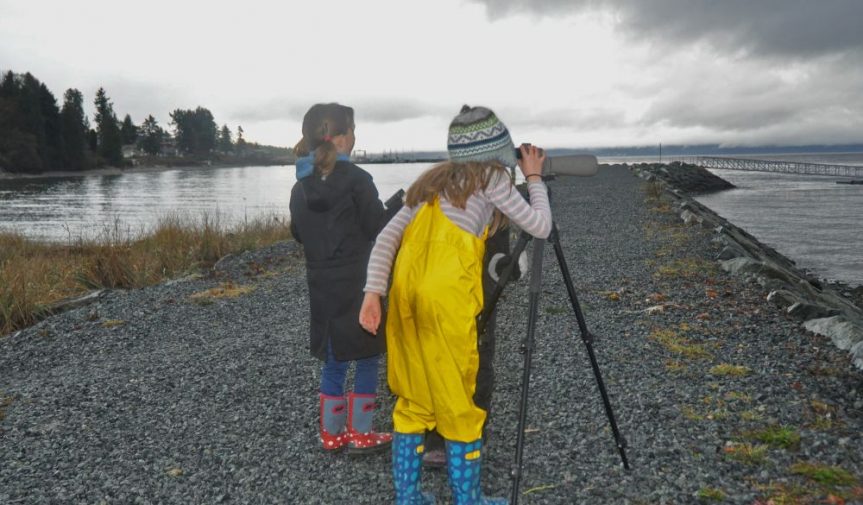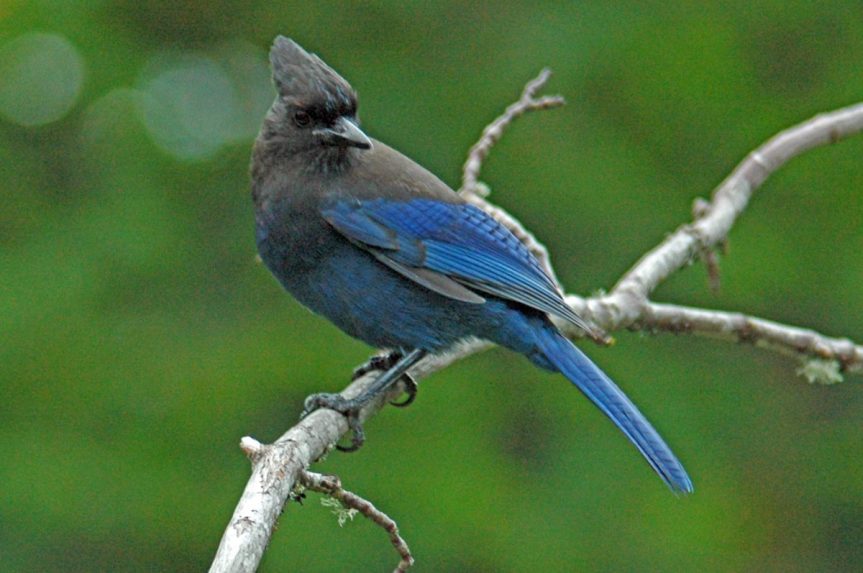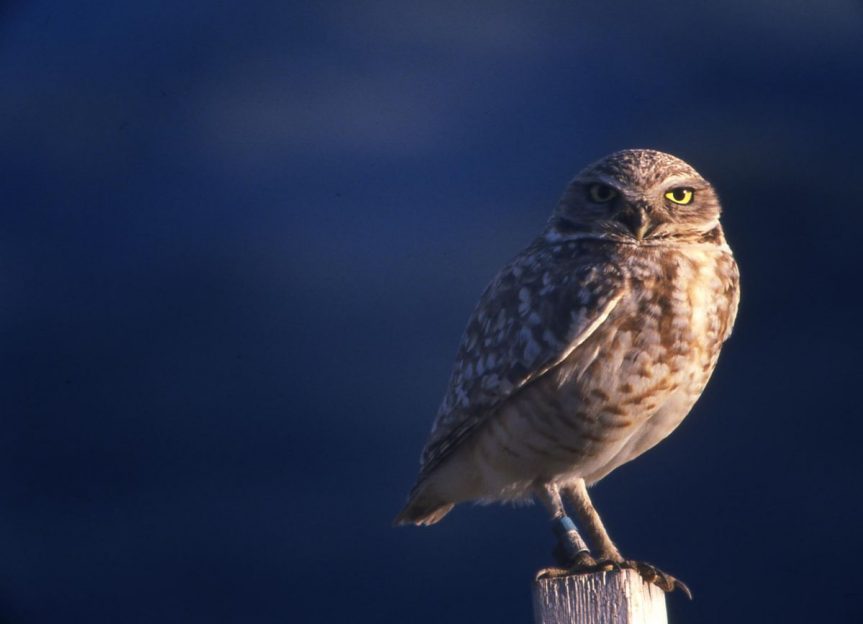
Day One was frankly a bust, with me getting the time wrong. The birds were mostly uncooperative, like this Song Sparrow… – A. Bryant

Pierre and I walked a long way … – A. Bryant

…without seeing very much – A. Bryant

But the rafts of Pacific and Common Loons were a nice treat – A. Bryant

And this was my first blue of the season.

14 May: This was so much better – Pierre and I showed up at the right time this time!

The birds were a bit more cooperative, like this Purple Finch – A. Bryant

See? – A. Bryant

Ah…springtime – A. Bryant

We had a brief glimpse of a young black bear – A. Bryant

Pierre showing some diagnostic bird features– A. Bryant

Like the wedge shape of raven tails – A. Bryant

A nice Orange-crowned Warbler – A. Bryant

Always nice to get out! – A. Bryant
Birding by Ear Part VI
by Andrew Bryant, 30 April 2016
Both Pierre Geoffray and I thought it a bit strange that nobody had showed at the Italian Hall by 8:00 AM – so we hung around for a bit, and decided to go birding anyway.
Thus I was horrified to later learn that I’d mis-remembered the time – our advertised walk was scheduled for 8:30 AM, and not 8:00 AM as I’d discussed with Pierre and announced at our last club meeting. The fault is all mine, folks, and mine alone. Fervent apologies to all who showed up after we’d prematurely left the scene. Oops. So Pierre and I decided we needed to do it again…
Birding by Ear Part VI !!!
by Pierre Geoffray, 14 May 2016
This morning a group of 10 birders walked the trails at the Wildwood Bluffs. The weather was perfect for birding, sunny but not too hot. AND the birds were there for us too, specially in the first 2 hours and they kept us busy trying to unravel the threads of their songs!
We found 20 species and that was pretty good for such a big group… The Black-headed Grosbeaks took first prize. They were everywhere, calling their “spik” notes or singing their long melodious whistles with the long upward note we learnt to recognize this morning? ( am I right?)
I stopped counting them after 15…Another bird we heard a lot this morning was the Wilson’s Warbler. A cascade of “chi chi chi chi” going down… The Yellow Warblers which just arrived in the last days were also omnipresent, further complicating things with their “sweet, sweet I’m so sweet!”, a song that can be easily confused with the MacGillivray’s two part (one high, one low) song… You are still following me?
Another warbler we had was the Orange-crowned Warbler. A thin trill dropping at the end like the bird had suddenly lost steam, and we compared it to the even pitched trill of the Spotted Towhee.
Today was also the first sighting of Swainson’s Thrush freshly returning from their South American wintering grounds. We had a small group of 4-5 birds at the beginning of the walk. They were not singing yet but giving instead they “huit” call so typical of our summer evenings…
At the end of the walk, one more warbler, the cute Common Yellowthroat played hard to get with us as he called and sang incessantly near the parking lot, allowing only short glimpses of its beautiful plumage. Birds can be difficult sometimes!
I really enjoyed the walk this morning and getting to know new birders in town was a real bonus. Thank you to all participating. Special thanks to Andrew Bryant to coordinate it.
Good Birding to you all.






























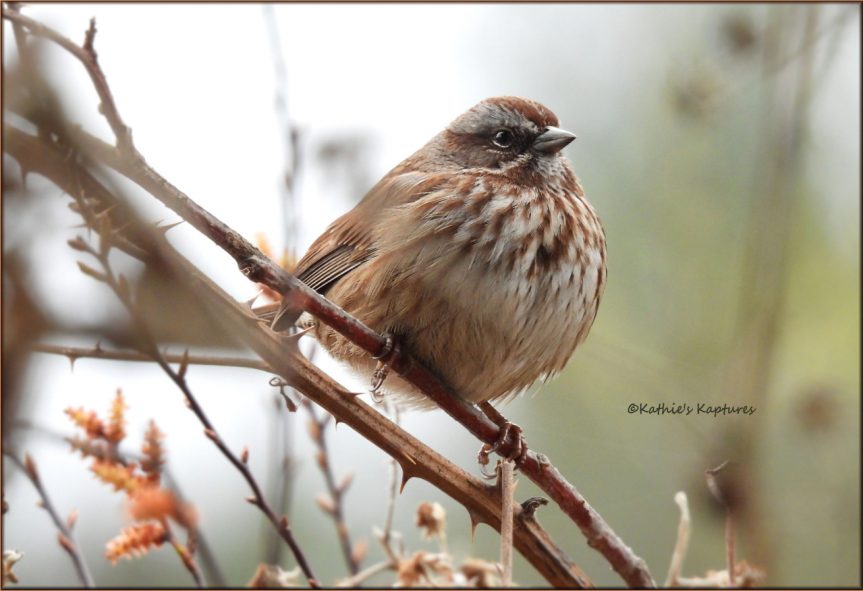












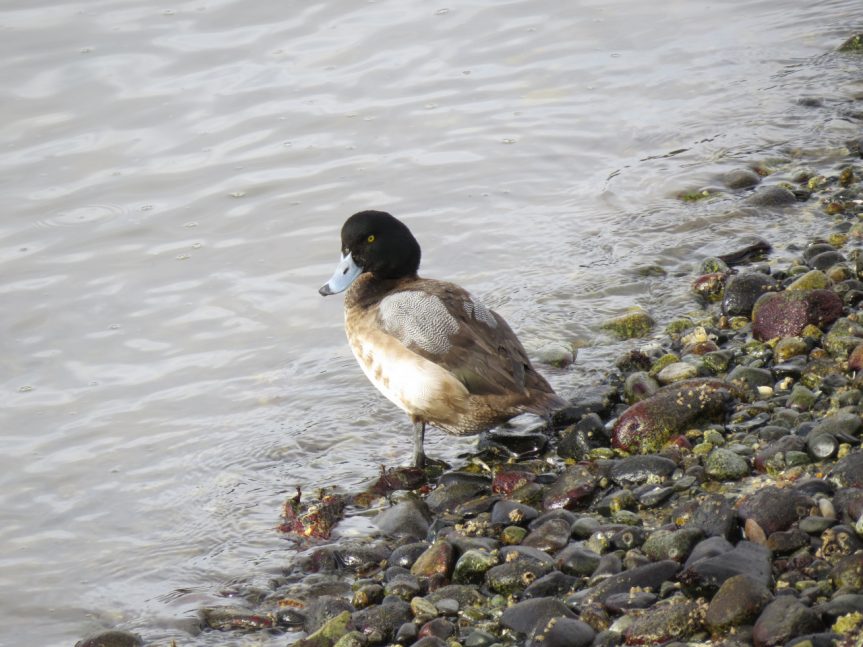





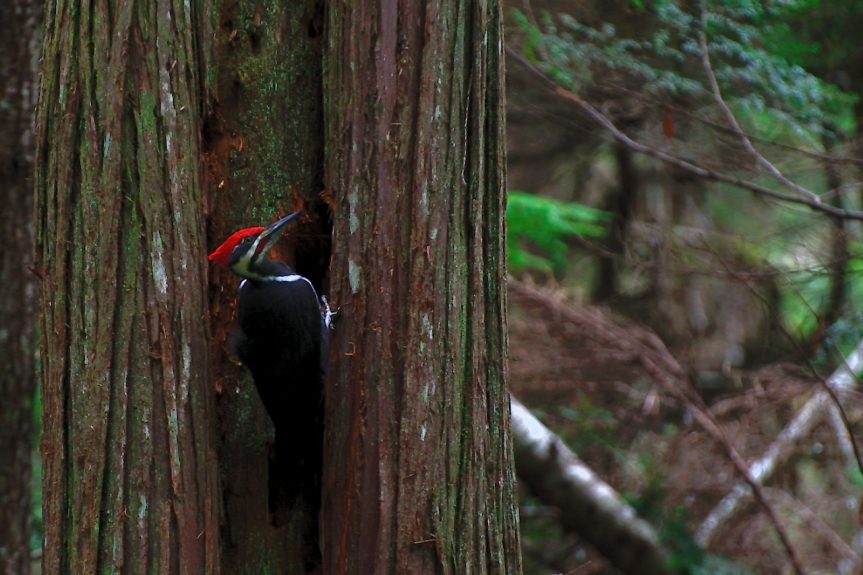



![He's late! The very unusual Wilson's Warbler [WIWA] spotted at Wildwood Bluffs - I. van Veen](https://i0.wp.com/www.malanat.ca/wp-content/uploads/2016/12/DSC_9648-3.jpg?w=286&h=218&ssl=1)


